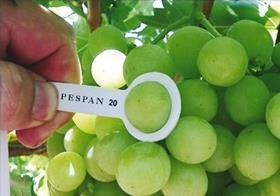
South African grape harvesting will be complete in two weeks and growers there are reflecting on a season that may not bring much joy in terms of gate returns despite asubstantial increase in exports.
Up to week 14 the South African table grape sector had exported 10m cartons (4.5kg) more than the previous season. According to the latest figures released by the South African Table Grape Industry (SATI), nearly 53m cartons have been exported so far this season, compared with 42.8m cartons last year and 49.8m during the 2009/2010 season.
During the last three weeks of the season mainly seeded varieties will be packed in the Hex River Valley, where rain that fell over Easter weekend is expected to bring about a premature end to harvesting.
Shipments to the UK so far this season are 15 per cent higher than last year while shipments to Northern Europe are up 19 per cent. Together the UK and Northern Europe received 76 per cent of the total South African export crop. Shipments to North and South East Asia rose by 23 per cent compared to last year. The total harvest is on a similar level as two years ago, while shipments to the traditional markets in the UK, Northern Europe and the Middle East also followed a similar pattern in terms of volumes as 2009/2010.
The exception was Asia where shipments rose by 54 per cent compared to two seasons ago. This proves the South African table grape industry means business when it says it wants to become a greater force in the region.
Whether the excellent crop will translate into much joy back on the farm remains to be seen. Whilst the early growers reported fairly stable markets in the beginning of the season, things turned around from the end of January. SATI Chairman Johan Conradie previously told Fruitnet.com that during certain weeks prices were well below the cost of production. One positive is that growers and exporters experienced a better exchange rate than last year.
Mid-season and late season growers are expected to be under pressure, particularly because of rain and hail affecting crops on two occasions in the Hex River Valley.



